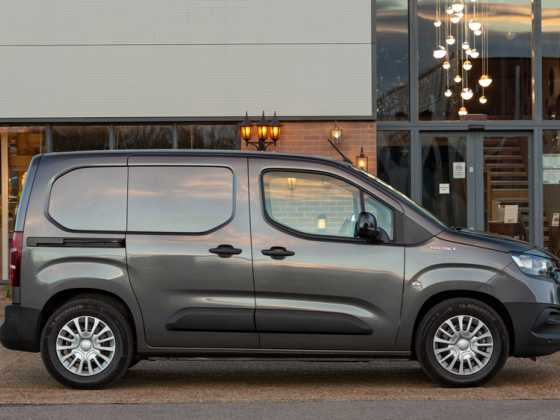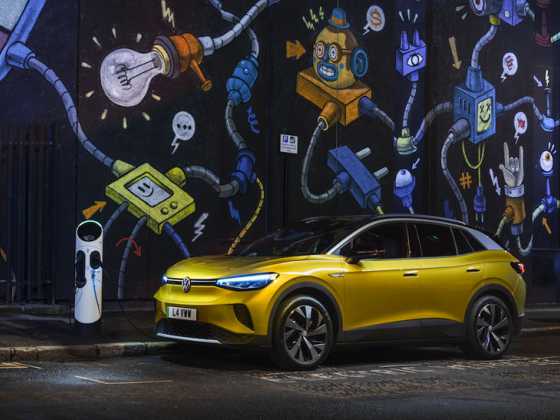First Drive: Volkswagen ID.3

The ID.3 showcases Volkswagen's new-found electric ambitions and is its most important new car since the first-generation Golf. Richard Gooding explores VW's crucial newcomer and uncovers an impressive first effort
What is it?
It's an understatement to say the ID.3 is a big deal for Volkswagen. Ushering in the company's post-Dieselgate transformation to a full-time EV maker, the ID.3 is based on a brand-new electric car platform – the MEB – which now also underpins models from the wider Volkswagen Group, including the Audi Q4 e-tron and the Skoda Enyaq iV. It will even provide a basis for a range of Ford electric vehicles, following a tie-up between the German and US companies.
The ID.3 arrived in the UK in September 2020, in 1st Edition specification, as tested here. Other, more mainstream models followed soon after, and with a choice of three battery sizes and power outputs, as well as five trims, the ID.3 family is comprehensive. It's the same story with the car itself – a new model from the ground-up, the ID.3 is around the same size as a Golf, but has more interior space, thanks to its Passat-rivalling wheelbase, and a style all of its own. Packed with technology, too, the '3' in its name denotes the 'third' era of Volkswagen, following the Beetle and the Golf. As pivotal a model as these icons, the ID.3 leads the charge on a new wave of up to 75 all-electric Volkswagen Group EVs that will arrive by 2029.
What range does it have?
As tested, in 58kWh specification, the Volkswagen ID.3 has an official WLTP-rated range of 260 miles. Models with a 45kWh battery can travel 216 miles between charges, while 77kWh ID.3s have the longest range of all at 340 miles.
How long does it take to charge?
Volkswagen states that the 58kWh battery (net energy amount) fitted to our test car can be refilled with 180 miles of range in 30 minutes when connected to a 100kW DC fast charger. On an 11kW AC connection a full charge will be completed in around 6 hours. The higher capacity 77kWh versions support 125kW charging, giving 200 miles in the same space of time). Filled from a 7kW wallbox, a 100 per cent charge takes 9.5 hours.
It's worth noting that the ID.3 doesn't come with a Mode 2 (three-pin) cable as standard, drivers having to pay £180 if they want one. Volkswagen's range of ID. customer We Charge plans has fast charging covered, though, with access to over 150,000 public charge points across Europe, with special rates for the high-speed Ionity network, of which VW is a founding partner.
How does it drive?
Externally, the ID.3 sets the template for future ID. models, with its slim light-bar 'grille' and swept back headlights. The rising waistline and thick rear pillars will be familiar to any Golf drivers, and while the ID.3 is certainly distinctive and has a futuristic edge, it won't alienate drivers familiar with Volkswagen's considered and conservative style.
Inside, though, things take a new-age turn. A flat, sweeping dashboard (brightly-coloured on some models) is home to a pair of digital screen 'pods'. There are no physical buttons, all the controls mounted in or on the screens and on the steering wheel spokes, accessed by haptic touch pads that vibrate gently when you touch them. While they take a little getting used to, they work surprisingly well.
The 5.3-inch digital driver's display is attached to the steering column, and move with it when it is adjusted. On the right-hand side is a selector similar to that found on the BMW i3 which is used to choose the gears, operated by twisting it in a forwards or backwards direction. In the middle of the dashboard, the 10-inch touchscreen controls the car's media, navigation and other functions, and despite the odd look, the slider buttons make a decent job of adjusting the volume and air conditioning. Compared to other Volkswagens, the quality of the materials doesn't quite live up to VW's famed reputation, but it's good enough, and the digital displays have sharp, bright graphics.
Flick the gear selector forwards and once you're on the move, the ID.3 is like any other electric car: quiet, relaxing and smooth. The pace on offer from the 150kW/201bhp rear-mounted motor – just like a Beetle! – is strong, and the car goes really well, even in Eco mode. Thanks to the batteries being placed low in the chassis, the ID.3's low centre of gravity is obvious, and it corners flatly and reassuringly.
There's a nice weight to the steering, too, which makes the ID.3 easy to place, and even though the ride on the 19-inch wheels is firm, it's not uncomfortable. With just one additional setting, the normal 'D' regenerative braking setting is strong, the even harsher 'B' mode allowing one-pedal control.
What does it cost?
Initial UK-bound ID.3s were 1st Edition models, as tested here. From October 2020, series versions took the 1st Edition's place, and the range currently consists of Life, Style, Family, Max and Tour models. In a break from more traditional ICE powertrain specifications, the ID.3 comes in a choice of 'configurations' and 'packs', with three battery sizes and three motors.
The £27,135 ID.3 Life kicks off the range, and is the only version available with all three motor power outputs. Battery choices are 45 and 58kWh, while drivers can choose between 143, 147, and 201bhp power outputs. Each battery and motor pairing has been grouped – 'Pure Performance, 'Pro', 'Pro Performance' and 'Pro S' – depending on which of the two powertrain elements are combined. While it can be tricky to keep track of the pairings, the five basic trims are much more straightforward.
Life cars come with 18-inch wheels, adaptive cruise control, ambient interior lighting, a black roof, an all-digital dashboard, keyless start, LED exterior lights, parking sensors, and wireless smartphone charging among their highlights. The £31,235 ID.3 Style adds 18-inch 'East Derry' alloy wheels, climate control, an illuminated front grille and door handles, 'IQ Light' LED exterior lighting, and a rear view camera. The £31,155 ID.3 Family gains auto wipers, electrically foldable door mirrors, heated front seats, a panoramic sunroof, and twin rear USB-C sockets.
Opt for the £37,745 ID.3 Max and you'll get adjustable lumbar support front seats, an augmented reality head-up display, a 10-inch Discover Navigation Pro touchscreen navigation infotainment system, dynamic chassis control and a slew of assistance systems. The top-spec £38,815 ID.3 Tour features 19-inch 'Andoya' alloy wheels, and four seats (in lieu of five).
It's worth noting that the jump of £5,000 in price between the ID.3 Family and the ID.3 Max is explained by the fact that the Max and the Tour have list prices above £35,000 and so don't qualify for the UK government's Plug-in Car Grant (PiCG).
How much does it cost to tax?
In common with all zero-emission cars, Volkswagen's new all-electric star doesn't incur any VED charges, in the first or subsequent registration year. The VW EV has a one per cent Benefit in Kind (BIK) rate for 2021-2022, which grows to two per cent in 2022-2023 and 2023-2024.
Why does my fleet need one?
The ID.3 heralds a new era in Volkswagen's fortunes, and to be its game-changing new icon, it had to be good. And there is much appeal here and plenty to like. The choice of powertrain packages is strong and allows for plenty of choice, with an equally broad family of trims. Heavily reliant on digital technology, the ID.3 is well-specified and very competent, and comes with a more than competitive range in any powertrain choice. Beginning to appear on roads in ever-growing numbers, drivers seem to have as much faith in Volkswagen's new all-electric star as the company does itself.
Model tested: Volkswagen ID.3 1st Edition Pro Power 58KWH









